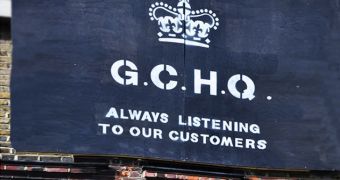Since the GCHQ hearings are soon to start in the UK, where the intelligence agency’s actions will be scrutinized, some more information about how it conducts business should come in handy.
The Intercept published a new report based on Edward Snowden’s leaked documents exposing a wide range of tools that enable the British equivalent of the National Security Agency (NSA) to hack into social media tools, as well as other communications outlets with the purpose of planting false information on the Internet.
The document the article is based on is dated back to 2012, and it details several code names of various programs put in practice by the Government Communication Headquarters (GCHQ) to inflate pageview counts on websites, boost the sanctioned messages on YouTube, manipulate the results of online polls, censor video content that they consider to be “extremist” and more.
The creator of all these tools is the Joint Threat Research Intelligence Group (JTRIG). The Intercept writes that the programs detailed in the document are some of the most startling methods of propaganda and Internet deception within the entire trove of Snowden files.
If the JTRIG name seems somewhat familiar, that’s because it was previously linked to the creation of fake victim blog posts, “false flag operations” and the “honey traps,” as well as to the psychological manipulation used to target online activists, the monitoring of WiliLeaks visitors and the spying on YouTube and Facebook users.
“JTRIG Tools and Techniques” is a file that offers a long list of operations used by the GCHQ. For instance, “Angry Pirate” will permanently disable a target’s account on their computer, while “Underpass” will change the outcome of online polls.
The programs involving the mass delivery of email messaging or SMS messages to support an Information Operation campaign are called “Badger” or “Warpath.” The disruption of video-based websites hosting extremist content through concerted target discovery and content removal is called “Silverlord.”
There’s also a program used to provision real-time call records on Skype called “Miniature Hero,” while the one used to find private photographs of targets on Facebook is dubbed “Spring Bishop.” “Gestator” will amplify a given message, normally video, on popular multimedia websites such as YouTube.
The GCHQ has also developed a suite of tools for monitoring target use of the British eBay site (Elate) and one specific tool to spoof any email address and send email under that identity, called appropriately “Changeling.”
Some of these programs were marked as “in development,” but most of them were already fully operational, tested and reliable. “We only advertise tools here that are either ready to fire or very close to being ready,” reads a note.
In response to the file, the GCHQ repeated its mantra, saying that everything is perfectly legal and in accordance with a strict legal and policy framework, while the agency is subject to “rigorous oversight.”
Considering the vast collection of tools mentioned above, it should be pointed out that the British lawmakers are currently working fast to push an emergency bill that would help keep the people sale. The bill allows the agency to force telcos to collect and store information about their clients, including the phone numbers they contact, the emails and text messages, as well as their browsing history.
This type of laws, dubbed as “Big Brother,” has just been slammed by the European Court of Justice who said they violate people’s right to privacy.

 14 DAY TRIAL //
14 DAY TRIAL //